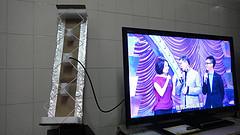In addition to developments skill or, more accurately, together with him, a sure path to excellence led through fasting, prayer, silence: from Josephus, who scribbled 'Antiquities of the Jews', to Andrei Rublev, when he painted Vladimir Assumption Cathedral. Conscious of itself works in general, and in architecture in particular, perhaps as a meaningful form of activity only in the triumph of the ground, purely secular over the divine. The exception is when creating an image of the divine, the creative person responsible action on the tragic cry of the unknown author of 'Book of Job': 'Oh, if I could compete with God, the Son of Man with my brother her! " Realizing that the objective process of creating a new place at all times, we can focus search of creativity in architecture at the transition, which at one time and divides, and connects the Middle Ages and Renaissance. This, however, only partly the complexity of the discovery, by the vagueness of the question of the nature of the new. You know what difficulties lie in wait for the researchers of science and technology, trying to date the opening and invention, as almost always find that someone and somewhere to have been the first before. In art, and it is, but many more subtle incidents. For example, the treatises of Leonardo da Vinci only in the xix century. become the property of culture, but some of them content during the life of the master became known circle of trusted companions, gave rise to attempts to imitate, intensify the work of imagination, such as growing into a modern Leonardo professional universalism.
For architecture, we can easily detect the situation of repeated 'discovery'. So, Tange, Kurokawa and others 'metabolists' rise in 50 years, the concept of growing or 'open' forms in architecture. But even James Brunel enough British architect, in 1915 drafted a collapsible hospital, where an autonomous halls and chambers of operating were connected to the sections of the corridor, built up 'indefinitely'. This does not only a conceptual framework. Hospital unassembled was transported by sea and erected on the infamous Galipoliyskom beachhead the British expeditionary corps. This fact was published in Illustrated Weekly, but he did not become the property profession and was forgotten. Except for the horizontal strip glazing, four of the 'five principles' of Le Corbusier were perfectly known to him.
Free, transparent the first floor, resting on the columns – is a sign of many palaces in the Roman-gothic tradition, but also a number of projects Bull. Curtain wall, attached to the frame of the columns – is a series of buildings 60 and 80 of the xix century. in Chicago, Buffalo and other American cities. 'Free plan' interior in the frame construction – but enough to call Pedrera, Antoni Gaudi completed in 1910 in Barcelona. Finally, 'operated roof' flat terrace on the roof – it has possessed the ancient Babylonians, it was brilliantly played another in the xvii century. in the French chateau of Chambord – and again, Gaudi, starting with homes in Belesguarde, whose construction was begun in 1900, gave the old Admission of new, unprecedented shine.
 Preference for this technology because it offers huge advantages over analog Television, these are summarized as follows: to provide high spatial resolution, greater realism that can be seen in a larger screen is possible. Clear the way toward a more computerized society, since it allows the TV-PC convergence. The TV can support data from telecommunications services, supplying a large number of services. Better quality of image and sound. The signal is robust against interference, noise and multipath propagation.
Preference for this technology because it offers huge advantages over analog Television, these are summarized as follows: to provide high spatial resolution, greater realism that can be seen in a larger screen is possible. Clear the way toward a more computerized society, since it allows the TV-PC convergence. The TV can support data from telecommunications services, supplying a large number of services. Better quality of image and sound. The signal is robust against interference, noise and multipath propagation.